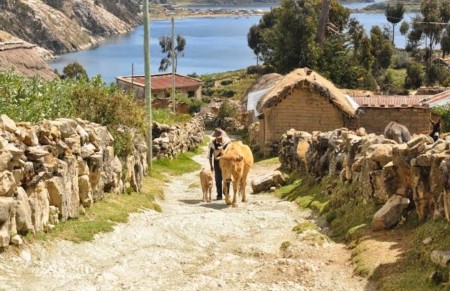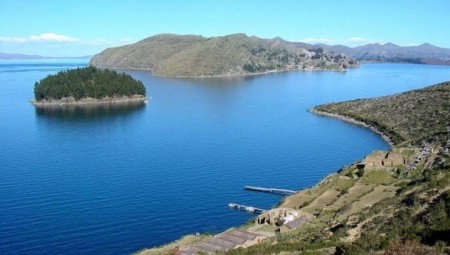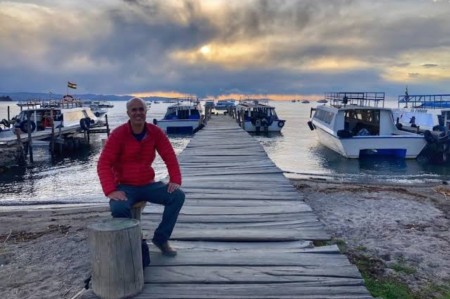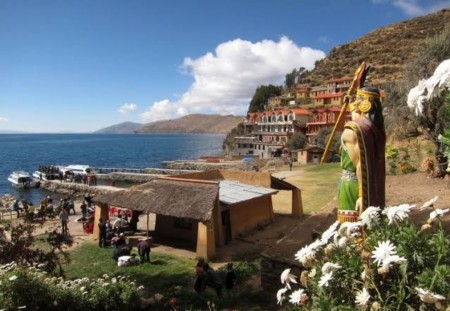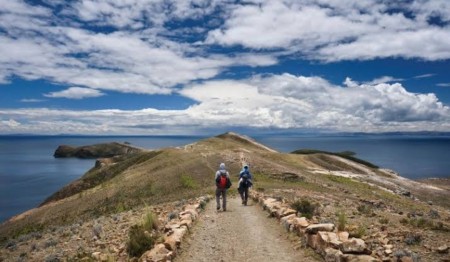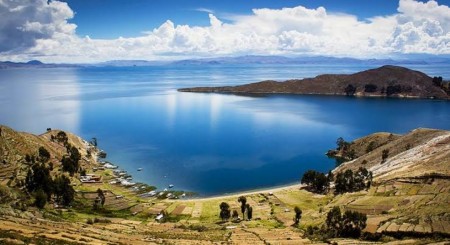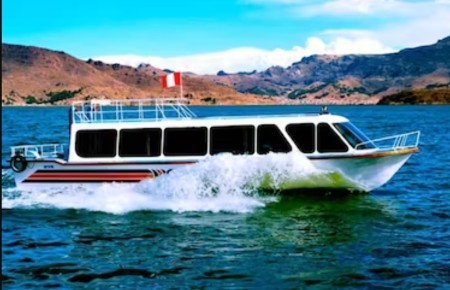Things to Do in Copacabana

From US$ 15 per person
Top sights
Basilica of Our Lady of Copacabana
The Basilica of Our Lady of Copacabana is a 17th-century Spanish colonial shrine that houses the image of the Virgen de Copacabana. It is located in the town of Copacabana, Bolivia on the shores of Lake Titicaca near the Altiplano region. Our Lady of Copacabana is the patron saint of Bolivia. The current building was built between 1669 and 1679 by the Spaniard architect Francisco Jiménez de Siguenza replacing a small former church. It was originally administered by the Augustinians.
Constructed at the foot of a small steep hill, sacred to the Inca and known as the Temple of Sun, it remains as one of the two principal sacred places of importance to the indigenous peoples and Catholics alike. The other is the Virgin of Urkupiña near Cochabamba, Bolivia.
Cerro El Calvario: You get an amazing sunset view from the cerro, do bring a flashlight or full battery on your phone to get back down. We walked up Cerro Calvario, a hill north of town, where we climbed pass 14 stations of the cross. Due to the high altitude I struggled with the climb, but made it to the summit. There is a great view of Copacabana and Lake Tititcaca. Stunning views of lake Titicaca and Copacabana, especially at sunset. Very Heavy UpHill Hike (watch your heart) Religious References for the via cruxis, Amazing View once you are up there...Totally recommended
Avenida 6 de Agosto: Main tourist street where most of local tour agencies, restaurants, shops are located.
Museo del Poncho: The weaving process, the history of the Poncho and a journey throughout the Bolivian Andes that includes the regions of: Kallawaya, Curahuara, Omasuyos, Pacajes, Aroma, Bolívar, Tapacarí, Norte de Potosí, Tarabuco, Jalq'a, San Lucas, Kalcha and Caiza.
Isla del Sol: Isla del Sol is an island in the southern part of Lake Titicaca. It is part of Bolivia, and specifically part of the La Paz Department. Geographically, the terrain is harsh; it is a rocky, hilly island with many eucalyptus trees. There are no motor vehicles or paved roads on the island. The main economic activity of the approximately 800 families on the island is farming, with fishing and tourism augmenting the subsistence economy. Of the several villages, Yumani and Challapampa are the largest. There are over 80 ruins on the island. Most of these date to the Inca period circa the 15th century AD. Archaeologists have discovered evidence that people lived on the island as far back as the third millennium BC.
Many hills on the island contain agricultural terraces, which adapt steep and rocky terrain to agriculture. Among the ruins on the island are Titi Qala, a labyrinth-like building called Chinkana, Q'asa Pata, and Pillkukayna. In the religion of the Incas, it was believed that the sun god was born here.
Isla de la Luna: Isla de la Luna is an island in La Paz Department, Bolivia. It is situated in Lake Titicaca, east of Isla del Sol. Legends in Inca mythology refer to the island as the location where Viracocha commanded the rising of the moon.
Archeological ruins of an Inca nunnery were found on the eastern shore.
Peninsula Of Copacabana: This an alternative way to go to Isla del Sol o Isla de la Luna.
Popular things to do
Day Trips, Full-Day Tours, Cultural Tours, Overnight Tours, Top Picks, Sporting Events, Luxury and Special Occasions, Walking & Biking Tours, Transfer & Ground Transport
Ways to tour Copacabana
Book these experiences for a close-up look at Copacabana.
- 4 Days Bolivia: Group tour with English Guide from La Paz Bolivia
- Full Day Service – The Sun Island – Shared Service
- Copacabana, Island of the Sun (2 days), Full Day Tour to Sun Island in Copacabana from Puno.
- Copacabana Full Day
- Titikaka Lake & Sun Island – 2 days – Private Service – English Speaking guide
Top Attractions in Copacabana
- Lake Titicaca
- Isla del Sol
- Cerro Calvario
- Basilica of our Lady of Copacabana
- Isla de la Luna
- Horca del Inca
- Museo del Poncho
- Avenida 6 de Agosto

